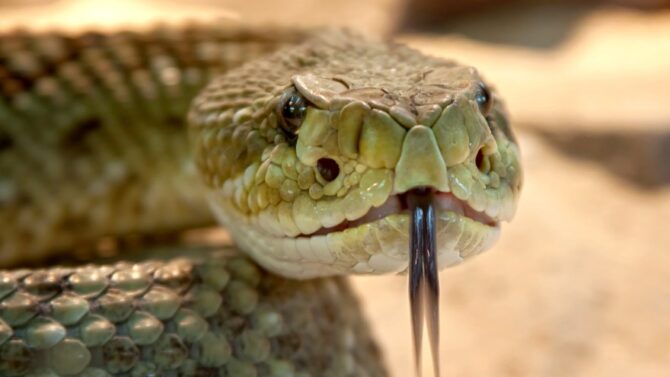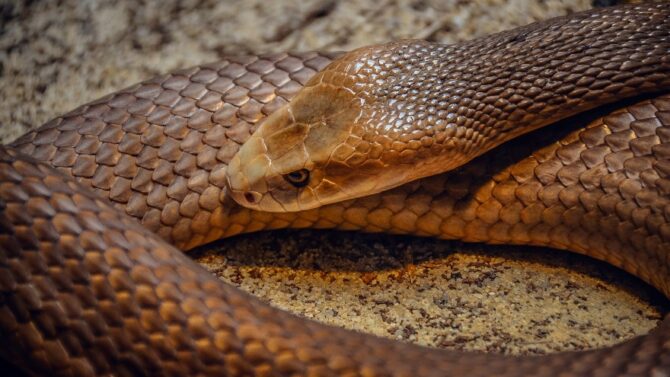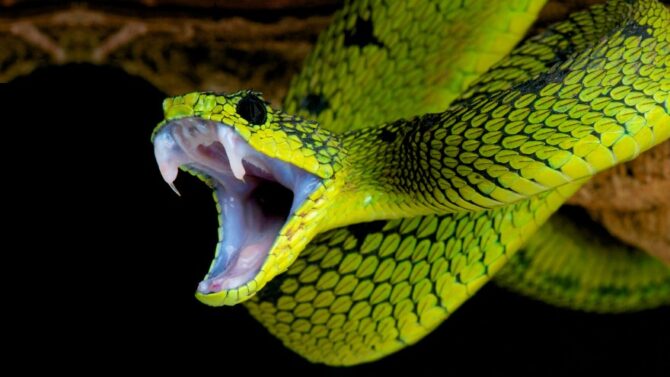Corn snakes, also called “red rat snake” is a nocturnal snake that is non-venomous. Corn snakes are kept as pets in various places and are known to be human-friendly.
Most reptiles, including alligators and crocodiles, shed their skin, and corn snakes are not an exception. This shedding process helps reptiles to maintain glowing skin.
Corn snakes shed their skin, but the rate at which they do differs based on age. Young corn snakes shed their skins more often.
The young ones shed their skins for the first time when they are about seven days old, while the adult corn snakes shed on average between 12-16 weeks.
How often do corn snakes shed their skin?
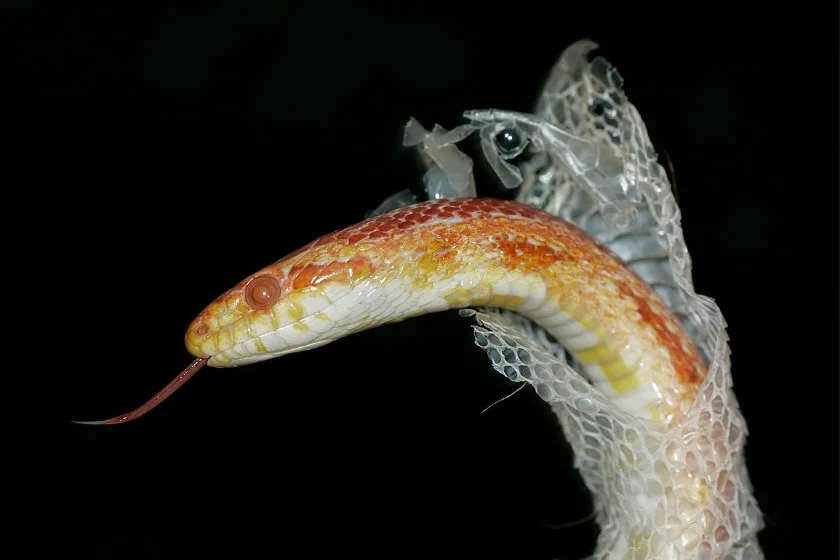
The rate at which these species shed their skins differs based on maturity. The juvenile corn snakes shed their skin within the first seven days of being born.
Adult corn snakes shed their skin on average every 12-16 weeks, and this skin-shedding process continues to increase throughout their lifetime. Corn snakes shed their skins about 4-6 times annually.
When do young corn snakes start to shed skin?
The juvenile corn snake called hatchling begins to shed its skin when it attains a week old.
The hatchling must shed its skin to keep up with its rapidly growing body. If the skin does not shed, it will be difficult for the hatchling to be proportionate with the new body growth it attains.
The older the snake gets, the slower the rate at which the skin sheds. For snakes about a year old, their skin sheds every 2-3 weeks, and for adults, it slows down to every 4-8 weeks.
Why do corn snakes shed their skin?
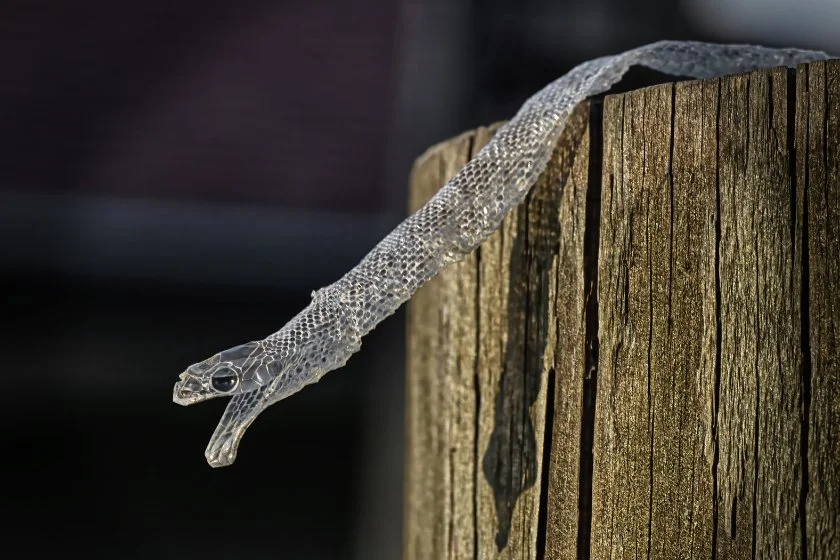
The major reason why corn snakes shed their skin is to adjust to their growth rate.
The snakes’ skin is not flexible compared to other animals like mammals whose skin can stretch or increase in proportion to their body size.
The reverse is the case for corn snakes. They must shed their skins to meet their new growth rate.1
Skin shedding is not a phenomenon common to corn snakes or reptiles alone. Other animals and even humans shed their skin.
However, humans shed skin in smaller cell proportions that sometimes happen without notice.
How long does it take a corn snake to shed its skin?
Skin shedding in snakes takes place slowly. Within 4-7 days on average, the process is completed.
However, the process may be slower for hatchlings as they are unfamiliar with the skin-shedding process, unlike adult corn snakes.
When hatchlings shed their skins, they exhibit some physical changes like the color of the eyes, dull or brighter scales, and lethargy. These signs indicate that the skin shedding is going on well.
If the skin-shedding process of your snake is taking longer than usual (more than a week), you can soak your snake in warm water (not hot) to ease the process.
If you notice some leftover scales on the skin of your snake, you can use a combination of warm water and a cotton swab to remove the leftover.
How do you know a corn snake is about to shed its skin?
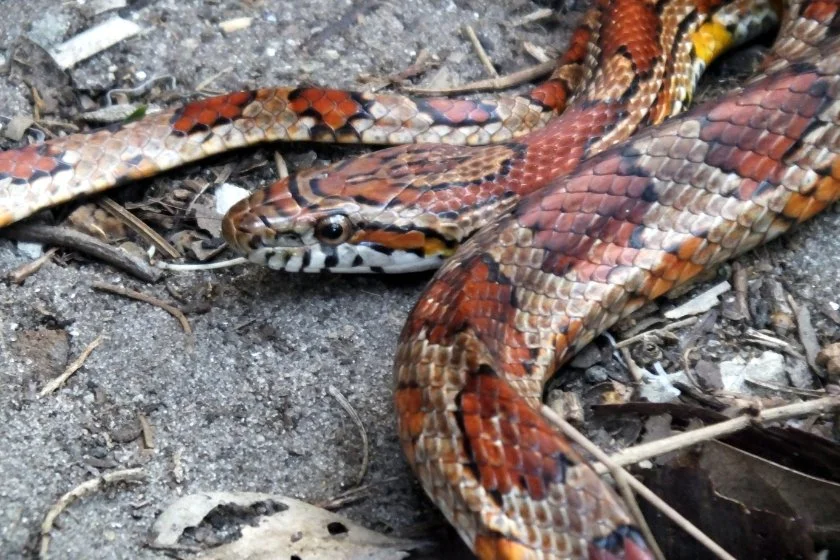
There are stages to the process of corn snakes shedding their skins. These stages are easily spotted or noticed.
The first stage is called the blue phase. This phase is characterized by a cloudish blue coloration of the eyes, with the skin becoming both darker and dull.
This phase lasts 3-5 days. When it is over, the snake returns to its normal appearance.
The next and final stage is the actual skin-shedding process. At this stage, the corn snake reveals its new skin after leaving behind its old skin.
What does the term “corn snake in blue” mean?
“Corn snake in blue” or “Going into blue” means the start of the skin-shedding process. Snake lovers mostly use this term.
Before they begin shedding, the skin becomes lighter and looks more faded than usual, and the eyes’ coloration becomes cloudish blue.
Blue is called “going into blue” when the eyes become cloudy. This indicates the start of the skin-shedding process.
How do corn snakes behave when shedding?
When corn snakes begin the shedding process, they tend to exhibit some particular symptoms, which include:
- Becoming temperamental
- Uneasy digestion
- Loss of appetite
- Poor vision
- Lethargy
- Unusual hiding
Not all corn snakes exhibit all these behaviors, but some may exhibit one or two of these behaviors when they shed.
What can make corn snakes shed their skin more often?
Some conditions can prompt corn snakes to shed their skins more often. For instance, if the snake sustains an injury like a bruise, burn, or cut, it can shed its skin more often than usual.
This defense strategy hastens the process of healing from the injury. Young corn snakes, too, shed their skins often due to their fast growth rate.
Can corn snakes be handled while shedding?
While corn snakes are shedding, it is advisable not to touch or handle them during this process, except when necessary. If your snake needs help, it may be assisted.
When corn snakes are shedding, their skins are very fragile; touching or handling them can irritate or damage the newly developing skin.
Do corn snakes need help while shedding their skin?
Corn snakes mostly do not need help while shedding their skin. However, if the snake is old, injured, ill, or very young, it may need assistance sometimes with stuck scales or unshed skins.
Snakes do not need help while shedding their skin if they are healthy.
To assist corn snakes with unfinished skin, you can use a combination of warm water and a cotton swab to help remove the stuck shed.
How do corn snakes shed their skin?
Corn snakes begin shedding their skin by being very active at night and rubbing their nose against rough surfaces or objects within their environment.
This helps them unshed the old skin, and the rubbing against rough surfaces helps form a tear that leads to the snake working its way out of the old skin.
Does season affect corn snakes’ skin shed?
Wild corn snakes tend to shed more skins during months with warm weather conditions because they are very active during this period, and they usually eat and grow more.
However, for corn snakes under stable temperature and humidity levels, the shedding is not influenced and can occur anytime.
One major factor influencing the shedding of skins is the outgrowing of old skins, not seasons.
Final Thoughts
Shedding for corn snakes is a biologically induced process that does not require interference.
Most corn snakes do not need help or assistance when shedding except for ill, injured, or old snakes.
Shedding is also a period that leaves snakes exposed and vulnerable.
They tend to exhibit certain behaviors during this process. However, they come out of this process brighter and more colorful.
Next up…
- Do Snakes Eat Their Shed?
- King Snake Vs Corn Snake: Key Differences & Similarities
- Milk Snake vs Corn Snake: Key Differences & Similarities
References & Notes
- Nature curiosity: Why do snakes shed their skin? Forest Preserve District of Will County, 2020.
![How Often Do Corn Snakes Shed Their Skin [Answered]](https://animalvivid.com/wp-content/uploads/2022/11/How-Often-Do-Corn-Snakes-Shed-Their-Skin-Answered.jpg.webp)

